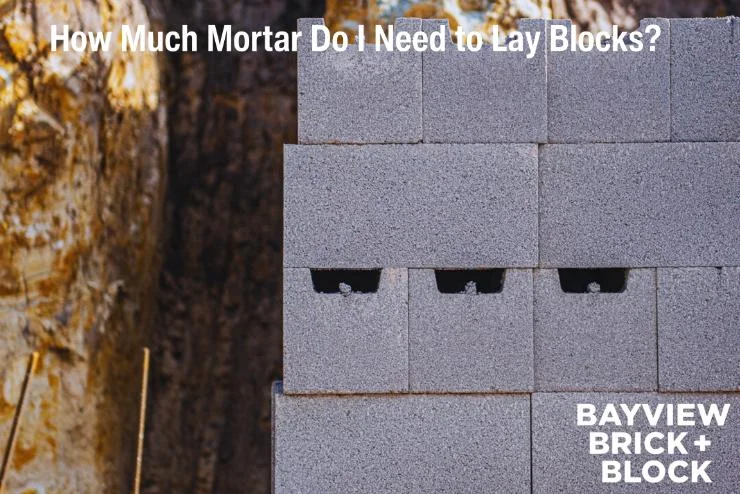You’ll need one wheelbarrow of mortar for every 100 blocks you lay. This is based on the standard 10mm joint thickness, which is common practice.
The most common metric used to work out how much mortar is required when laying blocks is by wheelbarrow. Though bricklayers providing blocklaying services may use cubic meters per block, the wheelbarrow metric is the most common.
In this post, we’ll talk about how to calculate mortar volume for different block sizes and tips for estimating mortar needs.
How to Calculate Mortar Volume for Different Block Sizes
To figure out how much mortar you need for different block sizes, start by calculating the joint area for each block. Here’s how you do it: measure the length and height of one block, then multiply these to find the block’s face area. Subtract the face area from the area the block covers in the wall to get the joint area per block.
Next, multiply the joint area by the number of blocks you plan to use; this gives you the total joint area. For the joints, a common thickness is about 10mm. Make sure you convert this to metres to match your other measurements.
Once you have the total joint area, multiply it by the joint thickness to get the volume of mortar needed. Keep your units consistent to avoid any mix-ups.
Lastly, remember that the type of block might require you to adjust your mortar volume slightly. Always double-check the manufacturer’s guidelines to tailor your mortar mix correctly. This helps ensure your project turns out just right!
Interested in learning about the difference between blocks and bricks? We have a blog that explains the distinction thoroughly.

Tips for Estimating Mortar Needs Accurately
The following are some tips for estimating mortar needs accurately:
- Double-Check Your Measurements: Start by accurately measuring the dimensions of your blocks and the thickness of the joints. It’s important to be precise and consistent, usually sticking with metres for ease.
- Plan for Extras: Always add a bit extra for any unexpected waste. A good rule of thumb is to include about 10% more mortar than your calculations suggest you’ll need. This covers any spillage or errors while mixing and applying.
- Look at the Specs: Before starting, take a look at the recommendations from your block and mortar manufacturers. Different materials might need different amounts of mortar based on their absorption rates and the recommended joint sizes.
- Try a Mortar Calculator: For a hassle-free calculation, use an online mortar calculator. These tools can quickly work out how much mortar you need, adjusting for things like the type of blocks, joint thickness, and the pattern you’re using.
Learn how many blocks a blocklayer can lay in a day by reading our blog here.
Do Block Patterns Affect Mortar Use?
Yes, the pattern you choose for laying blocks can definitely change how much mortar you need. For example, a stack bond pattern, with its aligned joints, often uses more mortar because it has many vertical joints.
In contrast, a running bond, with its staggered layout, typically uses less because it has fewer vertical joints across the same area.

